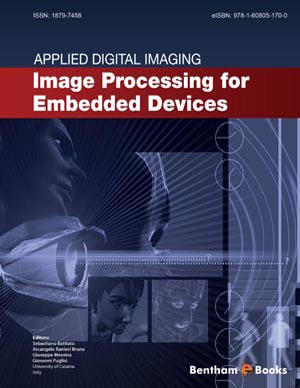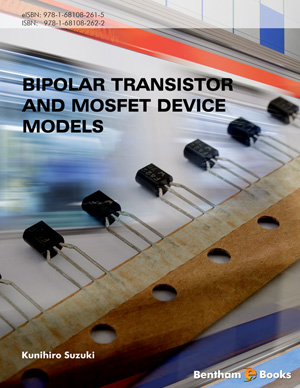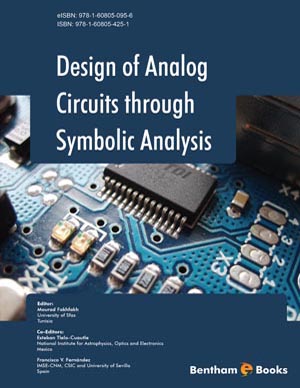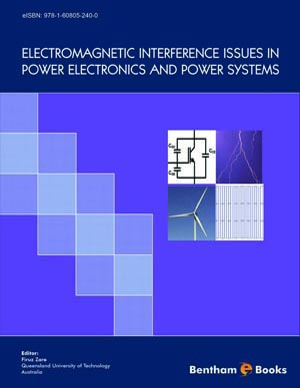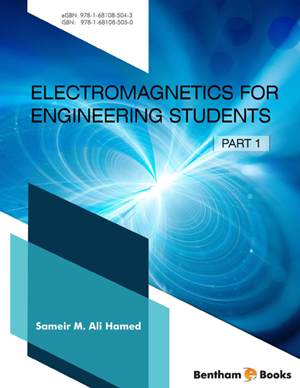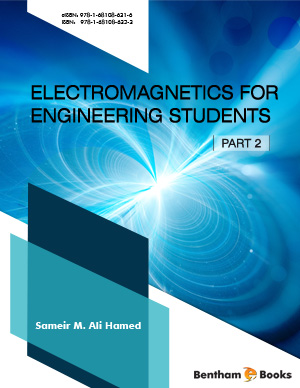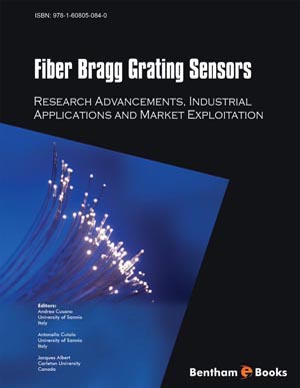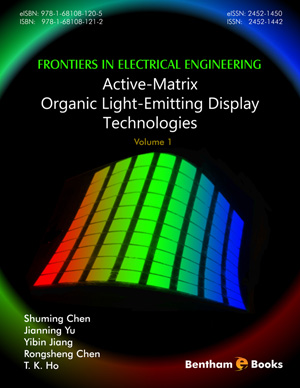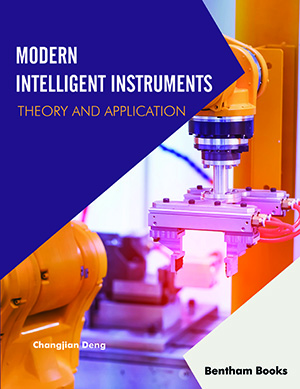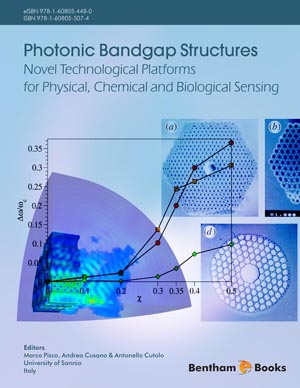Overview of Circuit Design Technologies about SMC
Page: 3-14 (12)
Author: Hirokazu Tohya
DOI: 10.2174/9781608054497113010005
PDF Price: $15
Abstract
SMC has the relatively short history about 2 centuries, however it became the leading existence in the worldwide industry, academia. The reasons of the improvement and the future problems for improvement are presented.
Electromagnetic Analysis of PCB
Page: 15-26 (12)
Author: Hirokazu Tohya
DOI: 10.2174/9781608054497113010006
PDF Price: $15
Abstract
The electromagnetic characteristics of many types of the microstrip line and the shielded vias are analyzed by using the method of 3-dimension finite-difference time-domain (FDTD) simulator.
Analysis of Performance of Decoupling Capacitor
Page: 27-38 (12)
Author: Hirokazu Tohya
DOI: 10.2174/9781608054497113010007
PDF Price: $15
Abstract
Many capacitors are used to the PDN. The conventional measurement method to get the terminal impedance of the capacitor has the problem from the point of view of the electromagnetism.
Validation of Decoupling Performance of Capacitor by PCB [1-3]
Page: 39-56 (18)
Author: Hirokazu Tohya
DOI: 10.2174/9781608054497113010008
PDF Price: $15
Abstract
The measurement result of the performance of the decoupling capacitors which were used on several redesigned MB of the commercialized workstation is presented.
Conformation of EMI Level and Suppressing Method of LSI
Page: 57-85 (29)
Author: Hirokazu Tohya
DOI: 10.2174/9781608054497113010009
PDF Price: $15
Abstract
EMC of PCB and ITE depends on the decoupling performance of PDN. The clarification of the relationship between the power current of LSI and the EMI of PCB became necessary.
Feasibility of Reconfiguring SMC to QSCC
Page: 86-99 (14)
Author: Hirokazu Tohya
DOI: 10.2174/9781608054497113010010
PDF Price: $15
Abstract
EMC problems will be solved if SMC is formed by the quasi stationary state closed circuit (QSCC). The result of the feasibility study for reconfiguring SMC to QSCC is presented.
Feasibility of Suitable Decoupling Component for QSCC
Page: 100-108 (9)
Author: Hirokazu Tohya
DOI: 10.2174/9781608054497113010011
PDF Price: $15
Abstract
The improvement of the decoupling performance of PDN will have the highest priority for forming QSCC. The result of the feasibility study of the suitable decoupling component is presented.
Improvement of Solid Aluminum LILC [1, 2]
Page: 109-119 (11)
Author: Hirokazu Tohya
DOI: 10.2174/9781608054497113010012
PDF Price: $15
Abstract
The best decoupling component was the solid aluminum LILC. The prototyping result for solving the problems which was clarified at the feasibility study is presented.
Novel Characteristic Equations for Decoupling Component
Page: 120-131 (12)
Author: Hirokazu Tohya
DOI: 10.2174/9781608054497113010013
PDF Price: $15
Abstract
For the effective improvement of the solid aluminum LILC, the characteristic equations which have the higher accuracy and convenience than the conventional EDTD simulators were developed.
Novel On-Board Decoupling Component Instead of LILC
Page: 132-144 (13)
Author: Hirokazu Tohya
DOI: 10.2174/9781608054497113010014
PDF Price: $15
Abstract
The novel on-board decoupling component as the substitute of LILL was developed, which became actualized by the novel characteristic equations, and the all problems of LILC were solved.
Advocating SEMW Theory [1- 4]
Page: 145-156 (12)
Author: Hirokazu Tohya
DOI: 10.2174/9781608054497113010015
PDF Price: $15
Abstract
The SEMW theory was developed for SMC design and analysis by fusing the conventional semiconductor physics, conventional nonlinear undulation theory and the conventional EMW theory.
Novel On-Chip LILL Technology [1- 5]
Page: 157-166 (10)
Author: Hirokazu Tohya
DOI: 10.2174/9781608054497113010016
PDF Price: $15
Abstract
The on-chip LILL technology became possible to actualize by the SEMW theory. The on-chip LILL will shorten the rise time and improve EMC of LSI greatly.
Novel MILL Technology
Page: 167-179 (13)
Author: Hirokazu Tohya
DOI: 10.2174/9781608054497113010017
PDF Price: $15
Abstract
The MILL technology became possible to actualize by the SEMW theory. MILL is used to the signal line and it improves the signal integrity and crosstalk greatly.
Innovative Circuit and System Technologies for SMC
Page: 180-195 (16)
Author: Hirokazu Tohya
DOI: 10.2174/9781608054497113010018
PDF Price: $15
Abstract
The reconfiguration of SMC to QSCC will actualize when the LILL technology, MILL technology, and the SEMW theory is applied.
Introduction
I joined NEC in 1968 and was assigned to the circuit development department of the computer division. My first work was the circuit design of the switching mode power supply (SMPS) for the mainframe of the computer system. My job area was expanded to development of the design rule and to standardization of all over the electric and electronics parts for the non-logic circuit. Non-logic circuit was categorized to except the gate-array which forms the logic circuit of the mainframe. The experiment of SMPS was considered to be dangerousness and no one wanted to design. Therefore, my development of the power supply system (PSS) including the circuit design of SMPS was continued. The electric current of the mainframe and the supercomputer was reached to several thousand amperes. The critical problem of PSS was the heat dissipation and the electromagnetic interference (EMI) against the logic circuit. In 1992, the full-scale R&D of EMC became necessary hastily. I was nominated and transferred to the chief managing researcher of the established EMC engineering center in NEC Laboratories. I had believed that the switching mode circuit (SMC) including the digital circuit and SMPS circuit will be improved greatly if the EMC problem is solved. However the deep R&D was difficult because the actual fruits in every year were required strongly. Therefore, his knowledge of the science concerning EMC was not deepened enough. However I could understand the actual status of technologies of the electronics and electrics widely and the basic knowledge about how to approach the science as well as R&D could be learned. During this time, I completed PhD course and received the PhD. degree from Kyushu University, lectured in Kyushu University and Tohoku University for one year each, and executed several national projects by the cooperation of his colleague in NEC and of the supporters in the industrial society and academia. These are considered to be my best harvest in NEC Laboratories. I had decided to continue R&D for solving EMC problem of SMC after his retirement and to try the commercialization of the fruit of R&D. I established ICAST which is the abbreviation of the innovative circuit and system technologies in 2005. The solitary electromagnetic (SEMW) theory was advocated and the novel technologies including the low impedance lossy line (LILL) and the matched impedance lossy line (MILL) were invented based on the SEMW theory. Two purposes exist in this eBook. The first is to be validated the SEMW theory by the academia and the industrial society. The second is the contribution to the growth of the industry in the world by the technologies of LILL and MILL.







